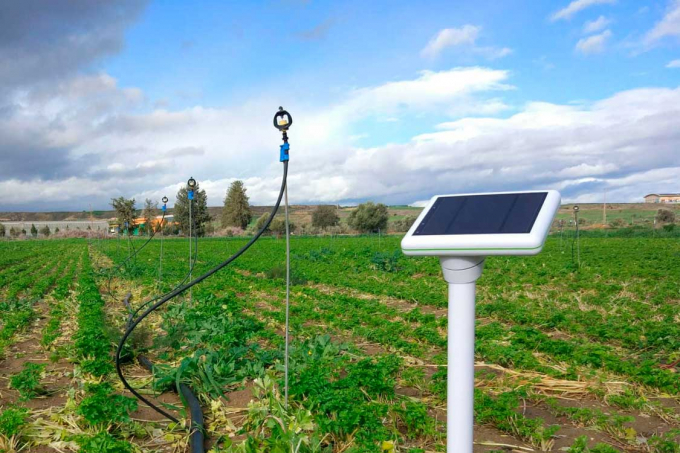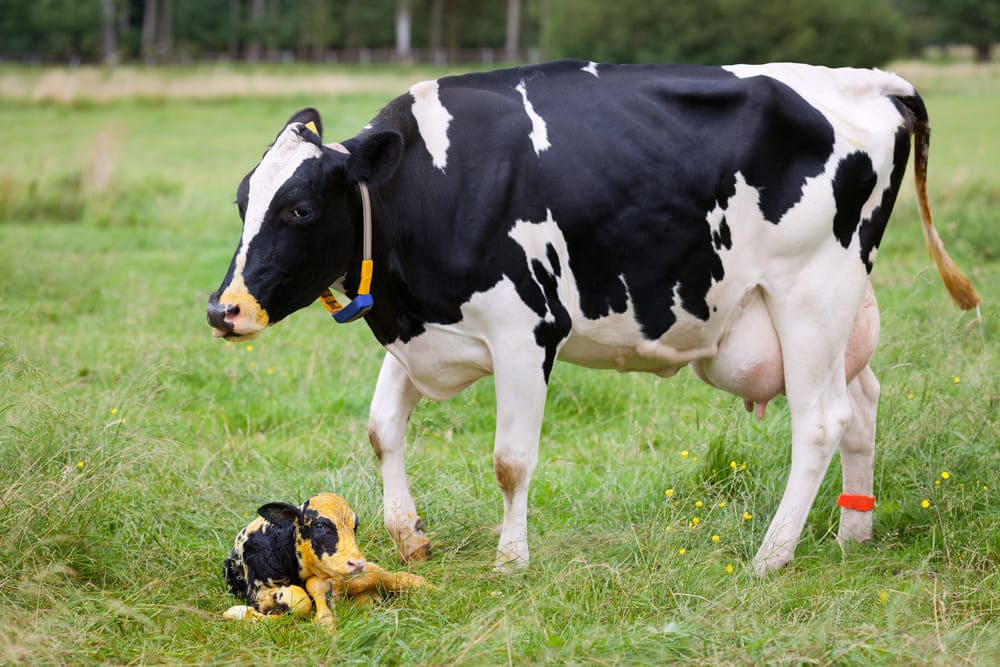Smart agriculture, a new term that applies IoT solutions in agriculture, helps farmers better control the process of raising livestock and growing crops.

With the increasing application of the Internet of Things (IoT), connected devices penetrate every aspect of life, from health, transportation to automation solutions for homes, cars and agriculture.
IoT in agriculture helps farmers have better control, while reducing dependence on unpredictable factors such as weather, and optimizing each process in the production chain, according to Business Insider.
For example, to monitor the condition of crops, farmers will install sensors on each plant, thereby determining exactly how much pesticide and fertilizer is needed until harvest.
In many parts of the world, Covid-19 has not been fully controlled, leading to disruptions in the supply chain of raw materials and a shortage of skilled labor.
“This situation will last for at least a few years,” predicted a professor at the American Institute of Biological, Environmental & Rural Sciences. The smart agriculture market size could increase to $6.2 billion in 2021, before tripling in 2025 to $15.3 billion.
There are five reasons why IoT helps improve agricultural productivity.
First, there are billions of data collected by smart agriculture sensor systems, such as weather conditions, soil quality, growth rates of each region by crop, or the health of livestock in real time.
Second, thanks to real-time monitoring, production facility owners can proactively plan product distribution according to growth. Also by closely monitoring actual output, farmers will avoid being forced to lower prices by traders with reasons such as crop failure or poor quality this year.
Thirdly, labor productivity will certainly increase due to many automated processes such as irrigation, fertilization, pest control, etc.
Fourthly, monitoring product quality even before harvest, based on reports and comparisons over the years. From there, farmers will find it easier to maintain higher standards of crop and livestock quality.
Finally, production waste as well as treatment costs are reduced because the output of one cycle can be used as an input for another cycle.

The most popular and well-known smart agricultural equipment is weather monitoring stations, combined with smart farming sensors. Measurements from the environment are synchronized, thereby creating climate maps. Based on this map, farmers will cultivate accurately and choose the right crops.
Another example is greenhouse automation. If in the past, farmers manually intervened to control the greenhouse environment, with IoT, they only need to set up initial conditions, then let the computer system automatically adjust factors such as light, temperature, soil conditions and humidity.
The two most promising applications when applying IoT to smart agriculture are livestock monitoring and drones. Unlike crops, livestock are more sensitive to external influences. The lesson from African swine fever is an example. Because it is impossible to control each individual domestic pig in the herd, one or a few come into contact with wild pigs and transmit the virus that causes the disease.
With IoT, each livestock will have its own logbook, set up until it is sold, recording its health status, habits, and even its current location relative to the herd to provide danger warnings. Based on the data, the system will send accurate notifications to the farm owner about which livestock may have problems. Together with unmanned aerial vehicles (UAVs), farmers can choose the level of livestock monitoring, depending on their needs.
Vietnam is an agricultural country that is gradually modernizing. However, the difficulty in applying IoT in real conditions is application design. Farmers in our country do not have the habit of using smartphones or computers to control the situation of the farm. Instead, people still choose the manual inspection method of visiting the fields regularly.
Another factor is the cost. Vietnamese agricultural products when exported often have a price advantage. If IoT is applied in many stages, even closing the cycle as the slogan of this technology is "from farm to table", the cost may increase. Another difficulty is that the scale of agricultural production in Vietnam is quite fragmented when up to 70% of production households have an area of less than 0.5 hectares.
In the world, farms of tens or hundreds of hectares have used IoT for many years, along with other scientific advances such as AI (artificial intelligence) and blockchain.
Unlike Vietnam, the difficulty of developed countries such as the US, Germany, France, etc. is data security. Due to the need for continuous connection and control, foreign farmers are forced to use wireless connections such as 4G, 5G or wifi to access data. This inadvertently creates security holes, because they are much less secure than using internal LANs.
Data security in agriculture is still a foreign concept to most farmers, even when they use high-value devices such as drones. To fully benefit from IoT, they are advised to maintain their systems regularly, and not to keep a habit of importing and exporting data.
According to nongsanviet.nongnghiep.vn